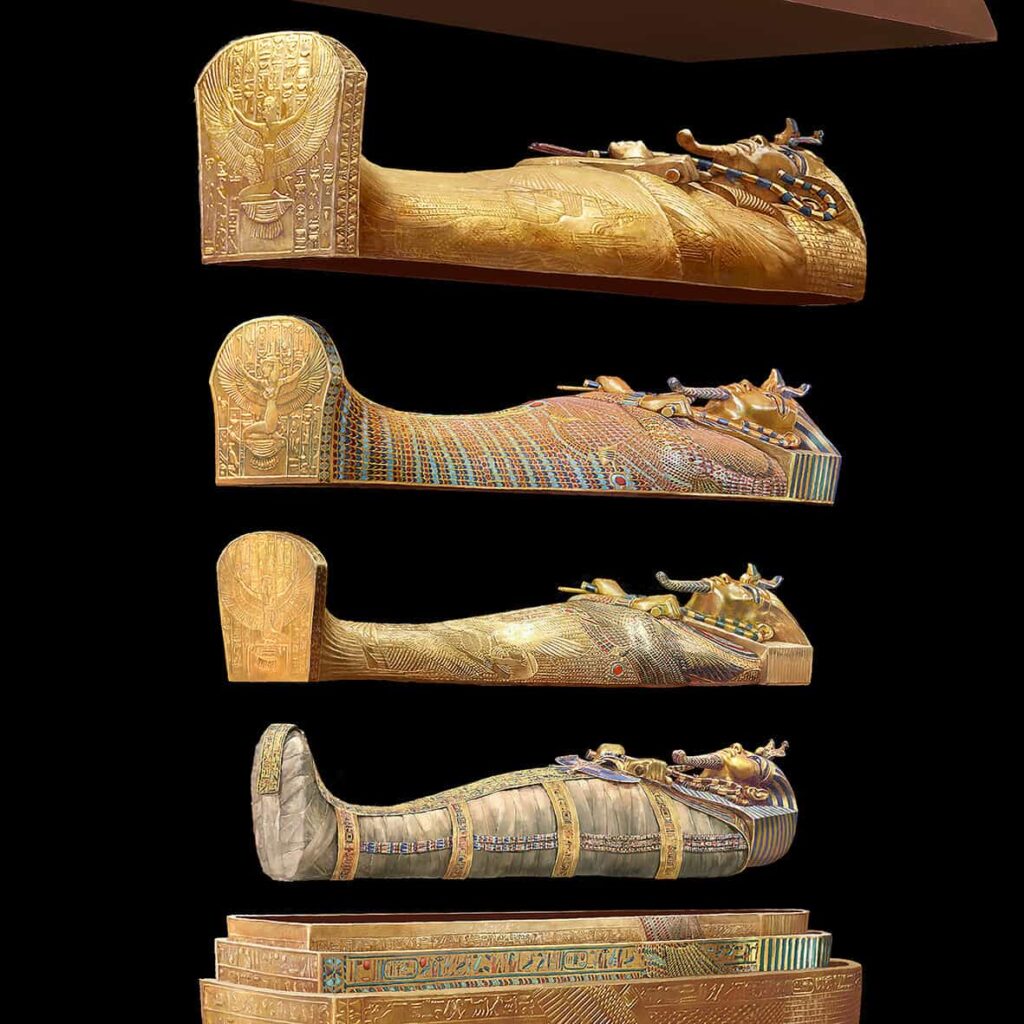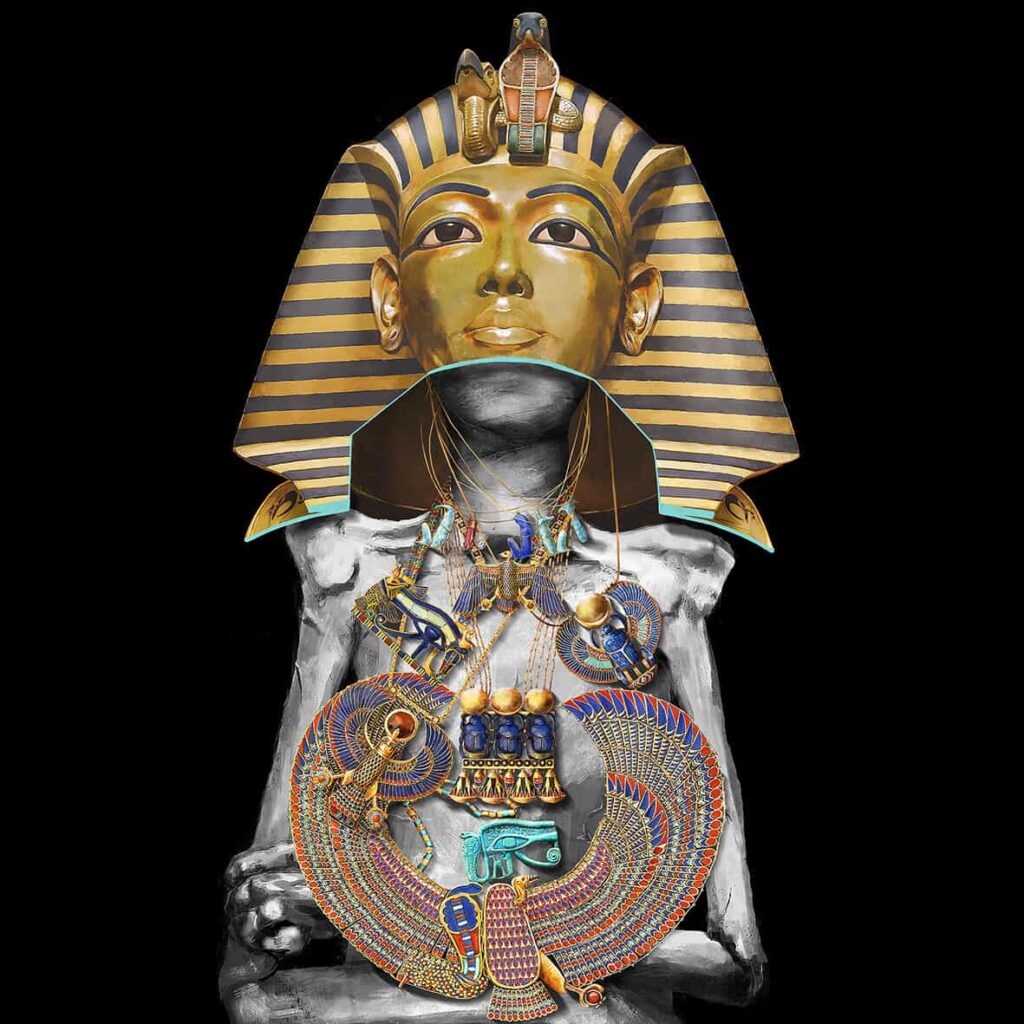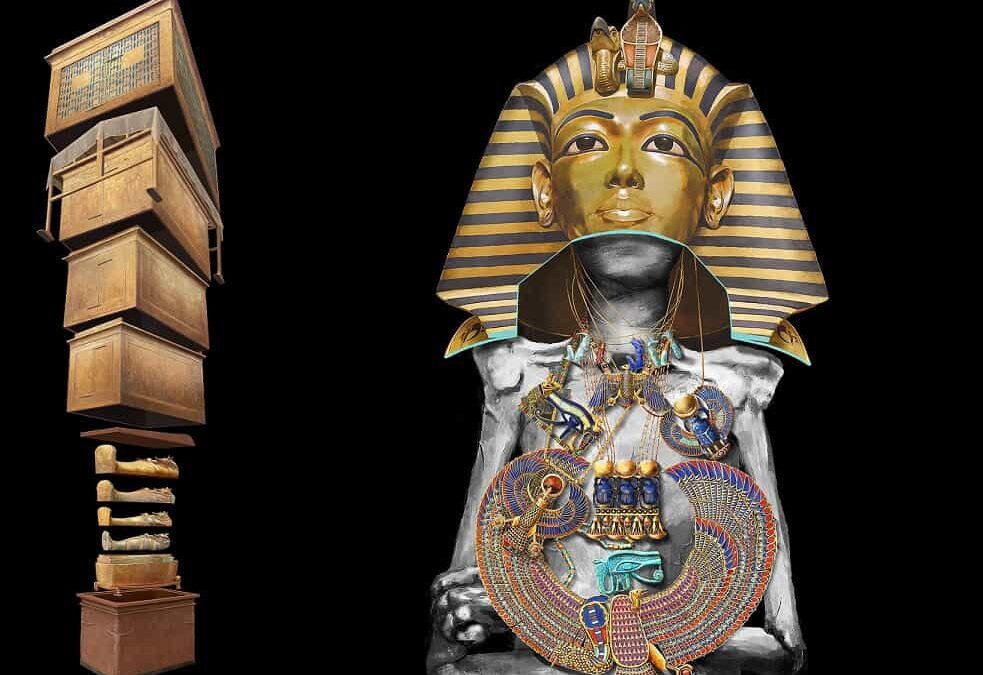The explorers of the tomb recognized that it had been plundered multiple times in ancient eras, yet the robbers had not breached beyond the outer chambers.
The sepulcher, still sealed until that moment, remained intact just as it had been left by the sacred burial procession three millennia prior.
Within, lay four ornate wooden shrines adorned with gold, three coffins fashioned in the likeness of mummies – two gilded and one crafted from solid gold – and a sarcophagus meticulously carved from a single block of quartzite. At its heart, rested Tutankhamun himself, draped in a striking gold mask that enshrouded his head and shoulders.
But how was King Tut’s mummy laid to rest?
The infographic illustrates the day-to-day progression of the mummy’s examination. An Egyptian mummy was a preserved body, enshrouded according to a set pattern with linen bandages.
Amulets were interposed between the layers of bandages, believed to provide mystical aid to the deceased in the afterlife. Through the multiplication of bandage layers, an increasing number of amulets could be included.
King Tutankhamun’s mummy, encased in an astonishing 17 layers of bandages, enfolded over 140 artifacts, predominantly amulets, alongside numerous personal effects, safeguarding his journey into eternity.
Howard Carter and his team spent seven days delicately removing all the bandages and artifacts encasing King Tut’s mummy. It wasn’t until the final moment that the golden mask proved stubborn, firmly affixed to the mummy by an ointment used in the mummification process, which had solidified over time, attaching it to the sarcophagus.
Tutankhamun’s Treasures
Despite prior discoveries and the evidence of tomb raids, the sheer extravagance and vast array of funerary goods still entombed alongside Tutankhamun proved staggering for both the excavators and the wider world.
The pharaoh’s posthumous needs mirrored his life’s desires. Objects specially crafted for burial and ancestral relics accompanied him into the afterlife.
It was believed that these provisions ensured the king’s comfort in the hereafter. A bounty of attire and footwear, regalia and adornments, fragrances and cosmetics, beds, pillows, chests, seating, writing implements, gaming boards, chariots, weaponry, hunting gear, fans, lamps, and an assortment of vessels crafted from ceramic, stone, and metal, along with jars of wine and baskets of provisions, were interred.
Most items bore Tutankhamun’s name or featured his image. In total, over 5,000 objects filled the four-chambered tomb, encompassing a space just over 100 square meters.










